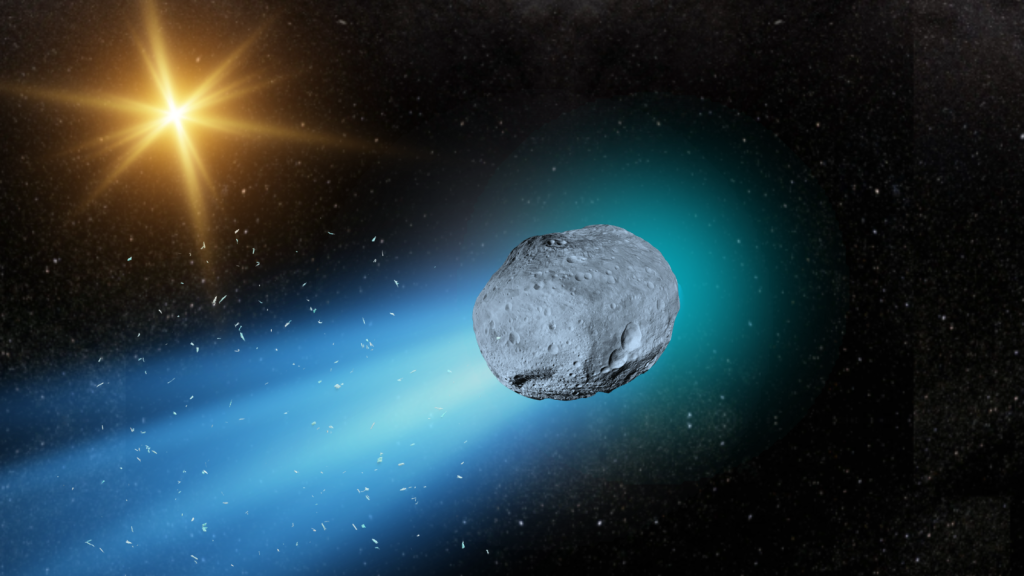Syllabus GS 3:
Science and Technology
Context:
Recently, scientists discovered a mysterious interstellar object named 3I/Atlas.
More on the News
- 3I/Atlas was first observed on July 1 by the ATLAS survey telescope in Río Hurtado, Chile when it was around 670 million kilometers away from the Sun.
- The object could be over seven billion years old, making it about three billion years older than our Solar System.
- A team of scientists from Oxford University presented the preliminary findings at the national meeting of the Royal Astronomical Society in Durham, United Kingdom.
- This is only the third interstellar object ever discovered by scientists. The first two were 1I/ʻOumuamua (discovered in 2017) and 2I/Borisov (discovered in 2019).
About Interstellar objects
- Interstellar objects are space bodies that come from outside our solar system and pass through it.
- They are not bound to any star by gravity and may be thrown into space after collisions or by the gravitational pull of planets or stars.
- Scientists have long believed that such objects often enter our solar system, but they were too small and faint to detect until recently.
- With better technology and more powerful telescopes, scientists have now started to observe them.
How does scientist identify an interstellar object
- To find out if a celestial body is interstellar, scientists study its path or trajectory. Objects like planets, asteroids and comets in our Solar System move in closed elliptical orbits.
- At their closest point to the Sun (perihelion), they move the fastest but are slowed by the Sun’s gravity.
- At their farthest point (aphelion), the Sun’s gravity pulls them back toward it.
- In contrast, interstellar objects don’t follow closed orbits—they move in open paths and are not held by the Sun’s gravity.
- The path of interstellar objects is very different from that of solar system bodies.
- They move in open-ended hyperbolic orbits—meaning they have a perihelion (closest point to the Sun) but no aphelion as they travel so fast that the Sun’s gravity cannot pull them back.
- This allows them to escape the Solar System.
- To identify such objects, scientists calculate their trajectory by observing factors like their speed and distance from the Earth compared to background stars.
- If an object is moving fast enough and is far away, it is likely on a hyperbolic path, confirming it is interstellar.
- In the case of 3I/Atlas, scientists noticed it was moving at 60 kmph while being 670 million km away from the Sun.
- This is unusually fast for such a distance, since objects that far from the Sun normally move slower due to weaker solar gravity.
- This suggests that 3I/Atlas entered our Solar System with a high initial speed, confirming that it is an interstellar object.
Significance of Examination
- Objects like 3I/Atlas and 1I/ʻOumuamua can offer important clues about how planets and solar systems beyond our own were formed.
- By studying their chemical composition, scientists can learn about the conditions in their home systems and how they originated.
- For example, if an interstellar object contains a lot of ice, it suggests that it was formed far from a star and later pushed out by a large planet, like Jupiter or Neptune.
- The type of ice can even help scientists guess where it came from.
- As the European Space Agency explains, we may be thousands of years away from visiting planets in other solar systems.
- But interstellar comets give us a rare chance to physically study material from distant parts of the galaxy — from places that are very different from our own Solar System.


